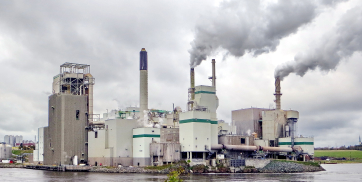This edition features a new rule on methane imports to the EU, Subpart W updates, new published methane protocols from the CDPHE, a new methane training curriculum, the EPA portal opening for submissions, a long anticipated GHG report from the National Petroleum Council, finalization of the Waste Prevention Rule, a new protocol from MiQ re: aggregating methane emissions along the supply chain, as well as some exciting career opportunities at Highwood. Thanks for reading the Highwood Bulletin for all your updates in the world of methane emissions!
Europe approves methane rule for natural gas imports
Ministers representing European Union countries (except Hungary) have voted in favor of a new rule that will impose maximum methane intensity values on imported fossil fuels from 2030 onwards. These long-awaited rules leave many questions on how to calculate methane intensity, which will be revealed in subsequent documentation, and will have significant impacts for countries exporting natural gas to the EU, including the growing US LNG market. Read more here.
US EPA publishes final GHG reporting rule
The United States Environmental Protection Agency has published the final Subpart W updates, which cover greenhouse gas reporting requirements for the oil and gas industry. Most source categories are updated, and some new categories exist. Most notably, large release events are now included to account for super-emitters than are not covered by other source categories. Access relevant documents on EPA’s website here and read Highwood’s blog post on the final rule here.
Colorado publishes methane intensity verification protocols
The Colorado Department of Public Health and Environment (CDPHE) has published new protocols that guide operators to report methane intensity using a combination of bottom-up inventories and top-down measurements. These are the first regulations globally to embrace methane reconciliation – and if successful, may set a new standard for how methane is regulated. Access the protocols here.
Highwood launches new online methane courses
Education is a core part of Highwood’s mission and is necessary to enable the success of achieving rapid methane emissions reduction amid rapid change and significant complexity. As part of our Education Strategy, Highwood is pleased to announce that we will be preparing up to 10 courses on methane in 2024. Two are available now to be taken online via our partners at SAGA Wisdom or can be requested live. Four other courses are in active development and will be available soon. Explore our courses here.
EPA portal now open for Alternative Test Method submissions
The US Environmental Protection Agency’s New Source Performance Standards and Emission Guidelines for Oil and Natural Gas Operations have been finalized and allow for the streamlined deployment of alternative technologies for conducting LDAR. A range of options exist, which have different survey frequencies based on technology sensitivity and other factors, but technologies must first apply and be approved by the EPA for use by operators. The portal is now open for those technology companies to apply – and several have already done so in hopes of being the first approved. Learn more here.
NPC publishes US O&G GHG reduction report
The National Petroleum Council has published a long anticipated report called “CH4ARTING THE CO2URSE – Reducing GHG Emissions from the US Natural Gas Supply Chain”. The study included a broad range of participants and charts a path towards achieving 70% reduction in methane emissions by 2050 relative to 2020. Access the report here.
BLM publishes final waste prevention rule
The Bureau of Land Management has published its final Waste Prevention Rule for the oil and gas industry on federal and tribal lands. The rule seeks to minimize natural gas waste, and will reduce methane emissions from vents, flares, and leaks. Learn more and download the rule here.
MiQ publishes supply chain protocol
A new protocol has been published by MiQ that offers a simple approach to aggregating methane emissions along natural gas supply chains. Estimating supply chain methane intensity across multiple companies and segments is critical to deliver trusted information to buyers and increase the demand for certified gas. Read more here.
Want to write for the Bulletin?
We’re always looking for guest writers who would like to contribute a Feature Article to the Highwood Bulletin. Please reach out if you’d like to write an unbiased, apolitical, solution-agnostic article for our ~2500 subscribers and ~7500 LinkedIn followers on an emissions management topic. Please reach out to our content team with your idea. Authors are fully credited and have a profile page on our website (we are happy to backlink).
Join our team! Highwood is hiring!
We currently have multiple exciting career postings on our website. If you have experience in methane emissions management and you’re looking for a career change, please reach out! Check out our active opportunities on our website by clicking here.





